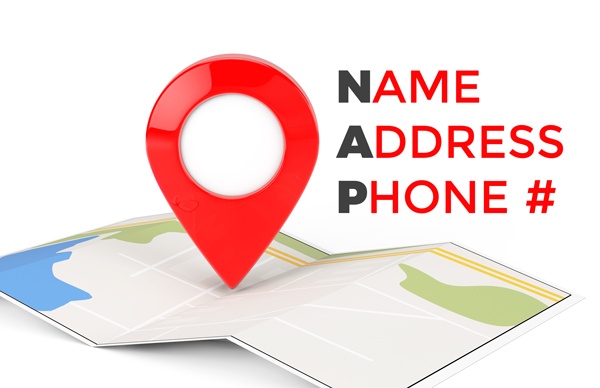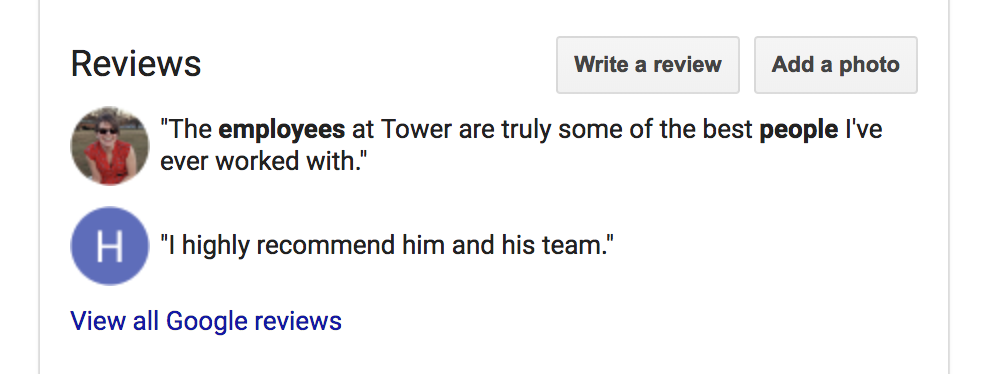Listen up real estate agents, house cleaners, home renovation businesses and anyone else in the home services industry. You need to connect with local clients. Without them, your business is just an expensive hobby. But how do you connect with local customers?
Sure, people calling from referrals or walking through your door have been your bread and butter.

But with more and more people turning to Google, Siri and other search tools for a modern word of mouth recommendation, local SEO will be critical to the world knowing you exist.
Do you know how to get found online?
If a customer asks their phone, “Okay Google. Who’s the best builder for renovating my bathroom?” will they find your home improvement brand?
The same goes for searching for someone to sell their home, a landscaping business, moving services or other home service brands.
Local traffic to your website is ridiculously important to the survival of your business.

Want to get found by local searchers? Put some of these local SEO strategy tips into play today.
Local SEO Tactic 1: Google My Business Optimization
If you want Google to list your business in search results, you need a local business page on the Google platform. It’s called Google My Business (GMB). All you need to do is fill out your basic business information, including your location and phone number, and you’ll be set up with an account. Or if a listing already exists, which can happen by Google pulling information from public records, you’ll need to claim your GMB.
To get the most from this free SEO powerhouse, you’ll want to optimize your Google My Business page listing. Start by focusing on these features first:
Optimize GMB with Category Tags
Add 3-5 category tags. Help the search engine know exactly what it is you do by choosing a realistic number of categories. Google is constantly changing these and adding new ones, so it's pertinent that you check frequently to ensure you're positioning yourself under the right niche (and helping the world's largest search engine understand what topics you're a thought-leader on).
Optimize GMB with Hours of Operation
List your hours. For local searchers, this information is invaluable for quick decision-making about stopping off at your location.
You can go deeper by adding your modified holiday hours or specific days you’ll be closed. Make it a priority every January to update your hours for the next year, or to go into your Google My Business account whenever you have to adjust them. Don’t forget to post about these on social too, for cross consistency.
Optimize GMB with Photos
Finally, add optimized photos and update them. These are prime pieces featured in your Knowledge Graph and get searchers clicking to your site— showing Google they like it when it serves your graph.
Users can upload their own photos to your listing as well. You should encourage them to naturally include them with reviews. While you can’t control the content or quality of photos submitted by the public, make sure you’re sizing your own photos appropriately. Don’t forget to add keywords in your file name and tag them as “interior” or “exterior” shots within the photo editor. The search engine also prefers freshness, so space out your uploading by posting a new shot or two every few weeks.
Local SEO Tactic 2: Local Link Building
Since the birth of the Google algorithm, link building has been a practice of search engine optimization.

For those wondering what a backlink is, it’s someone mentioning you on their domain with a blue, underlined hyperlink pointing “back” to your site.
Think of it as someone else vouching for you, telling others you’ve got good stuff to offer and to check you out. Plus, when others link out to you, especially those in your industry, it tells the search engines that you’re relevant to that topic. This is especially big for local businesses. From your Chamber of Commerce to local partners, links back to your website will help bring you traffic and improve local SEO.
Building Links for Local SEO
As a healthy business, it’s important to be aware of and grow your backlink profile, a Google ranking factor.
You can use various tools to see who is linking to you online like Ahrefs or SEMRush. Although both of these services have paid add-ons, their free versions can help get you started.
You’ll also get backlinks naturally for producing helpful, informative content, but knowing where you’re shining is half the battle. Leverage preexisting relationships (especially at the local level!) and always be fostering new ones online for better Google search rankings.
Local SEO Tactic 3: NAP
No, not that kind of nap. 😀😆😂
NAP stands for Name, Address and Phone. It’s the contact information for your brand online.
This step seems simple, but you shouldn’t take it lightly.
Your local rankings depend heavily on search engines understanding that you’re a local business. That means keeping your business name, address and phone number accurate across your website and social platforms, citation listings (more on that below) and anywhere you’re listed online.
Keep your NAP identical— word for word, including abbreviations and spelling— anywhere your business information is listed.

Ensuring that your company’s NAP is listed correctly on your own website is a great place to start, but don’t forget to check that it matches across all platforms like social, Yelp, Google My Business, etc.
Local SEO Tactic 4: Reviews
According to research on local SEO factors, Google looks at reviews as an important factor for ranking after one of their recent updates. More than anything, however, your reviews are for the people. Searchers who see your company on a SERP are considering becoming a customer. Reviews are social proof that show off your great attributes.
Seeing reviews like “Great service!” or “ ’ll never go back!” are quick and easy ways for consumers to decide which website they want to click and visit. These reviews will naturally come in over time, but consider asking for them by placing a sign in your store or a Google business logo sticker reminding people to leave a review if they’re happy with their experience.
Google typically features up to three individual reviews, displayed in two-lined quotes:

How to Get the "Reviews" Section to Show
Basically, have more than three reviews. Google can't display what's not there— and, the search engine wants a decent selection to choose from.
Ask your audience to review your business in an email blast (with the direct link) and by posting signage in your brick and mortar store. We recommend offering some sort of incentive for sharing their feedback in a Google Review, like a coupon or a free puppy. Okay, maybe not a puppy.
Ensure your current reviews are legitimate. You never want to come across an inauthentic to your audience by getting fake reviews, so be sure to get genuine feedback. The worst thing you can do is plant phony testimonials (or let spam sit on your page). Your audience will see right through it— and so will Google.
Reply to your reviews, good and bad. Even if you have many reviewers, Google will look for reactions to each from other reviewers, and to see that you as the business owner are actively responding to your customers.
And if you have some less-than-stellar reviews, be sure to follow these best practices for responding negative customer reviews.
Local SEO Tactic 5: On-Page Technical SEO
Need some technical SEO help? Here’s a short list to get you started.
Headings (H1, H2, H3)
Headings are usually the largest words on the page, which helps the reader quickly skim. They also help search engines understand your content, which in turn give them a little more weight than your other page copy. It’s a good idea to work your target keywords into the headings of each web page but make sure you accurately reflect your page content and still write for the humans reading it.
URL Structure
Include keywords in your URLs if possible. However, do not go changing all of your current URLs just so they have keywords in them. You shouldn’t change old URLs unless you plan on redirecting your old ones to your new ones. Consult a professional before doing this.
Page Load Speed
Google wants to help users find what they’re looking for as quickly as possible to provide the best user experience. Optimizing your pages to load faster helps your site rank higher in the search results.
Slow load times lead to unhappy visitors and higher bounce rates, which leads to lower local SEO power and falling off page one.
Local SEO Tactic 6: Location Page
Does your business have multiple locations? Do each of these locations have their own pages on your site?

Even if you have just one location, having your location on your site is important. Not just an address– but your location. Your location page is your gift to Google (and other online search engines).
Having an optimized page about where you operate gives you an advantage in the local SEO game. It’s a special place that tells the “big papa” search engines, “HEY Google! I’m in Phoenixville, Pennsylvania talking about ice cream!”
Why? Because some of your competitors probably don’t have dedicated location pages. They’re making search engines dig deeper for location cues— and although Google is smart as hell, their algorithms, much like actual users, like it when don’t make them think so hard.
When someone types in “ice cream parlor,” Google’s wheeling are spinning— and no matter if you’re on desktop or mobile, the search engine is pulling local results based on your IP.
You’re giving Google a shortcut— telling the search engine to crawl no more, for you’re serving them a local “ice cream parlor” on a silver platter.
What About a One-Location Local Business?
If you own a successful company with only one location, you can spruce up your contact page with all the same fun on-site SEO stuff.
Regardless of if you’re a small neighborhood shop or a multi-office regional entity, you can show your website some local SEO lovin’ by:
- Including “location” rooted words like “located, near, by, directions, office,” etc.
- Linking to other close businesses in your niche (or businesses complimentary to your services)
- Listing out a few sentences giving step-by-step directions to your business
- Inserting a Google Maps iFrame of your address
- Adding links to local attractions
Give Detailed Directions & Using Google Maps
This step is just as much for search engines as it is to help real prospects find your business.
Tell them the highway you’re off of and what road to turn onto to hit your shop. Point out the gas station that’s directly to the left of your store and that you’re only 15 minutes away from a super popular attraction that’s more commonly recognized in the area. And link to these businesses! It’ll show search engines your regional connection and improve your on-site SEO.

With Google being the largest search engine, using their Maps iFrame is good SEO karma. You’re telling the bots exactly how to find your business in their own tool. Plus, it’s a quick way for users to pull up directions on mobile.
Local SEO Tactic 7: Understanding Keywords
Keywords play a major role in improving your website’s SEO ranking. But you know this, right?
Make sure you’ve done your research, you’ve set a keyword strategy (including learning about things like pillar pages and topic clusters), and you’re focused on relevant content.
What local problem do you solve? What keywords relate to that? Look for local colloquialisms and phrases.
Remember that keyword saturating will have an adverse effect on your ranking. Google doesn’t like keyword stuffers. They should be a natural part of your writing.
Write for humans, not algorithms.
A few tips on keywords:
- Include them in your header tags
- Put keywords in image captions and file names
- Use long tail keywords
Local SEO Tactic 8: Optimize for Mobile Users
We go to our phones for answers, no matter where we are. So mobile searches continue to grow. With that growth comes more people heading to your site on mobile devices.
In fact mobile use is rising so fast that it’s actually overtaken computers and laptop devices. Over 60% of Google searches come from mobile devices. 🤯 Since we’re all using our phones, Google ranks sites accordingly.
Your website needs to be optimized for mobile users. If your site isn’t optimized, user experience tanks, as will your SERP rankings.
Structure your site with responsive design as a starting point. Make sure phone users can see what they need to see, pop ups are gone, images load fast and people can get to the menu easily.
Next, consider why someone is on your site while they’re on their phone. What can you offer them while they’re on the go that is different from someone on a laptop? Mobile strategy means thinking about your buyer personas and user experience.
Local SEO Tactic 9: Back to Basics - Blogging
Yes, we’re still beating the blog drum. Blogging is great for your business. Not only does it get the search engines to crawl your site more consistently, but it helps with visitor engagement and lead generation.
For all these reasons, blogging improves SEO rankings. Producing fresh, relevant, consistent content drives people to your website, giving them a reason to stay on your pages for a while.
More time on site after a search leads to search engines seeing value in your site for their results. Blogs are the perfect channel for this.
If you can establish a large group of faithful readers through email subscriptions and social media engagement, you can get lots of traffic to your site on a daily basis. This is especially powerful when you focus on local keywords and a local audience!
Local SEO Tactic 10: Practice Citation Building
A local citation is a spot where your company is mentioned online— like a business listing— and usually consists of a combination of your name, address and phone number. Remember NAP from earlier?
A citation can take many forms: like your company being featured on a listing directory, a YellowPages-style listing (think back in the olden days of paper phone books, except online now) or a business profile on social media.
For instance, your Yelp page is considered a citation, as well as your Facebook Business page. Basically anywhere you have your NAP proudly displayed for searchers to see is a citation.
Generally, there are two types of citations: structured or unstructured. Let’s explore the difference:
Structured vs. Unstructured Citations
Structured local listings are usually those found on a formal directory, where you can submit your NAP and sometimes other information about your business (like hours, details about the company, etc.).
Unstructured citations are mentions of your business’ name/address/phone number on any site other than a company listing directory. These often include mentions on blog posts, news sites, Wikipedia, etc., but aren’t limited to that.
For instance, HubSpot listing our inbound marketing agency on their domain and linking back to us is a prime example of an unstructured citation.
This is common online real estate for link building campaigns too, to improve your back-linking profile by getting another company to mention your business.
Citation building is important for improving your local search engine rankings because search engines like Google and Bing use the information they find within citations to help list your business in local search results. Quality citations will lead to better local SEO.
Local SEO isn't Magic, but Can Take an Expert
As a business owner or someone working on a business, Search Engine Optimization (SEO) can be complicated to focus on and track. We can help you to set up and maintain an SEO strategy so that you don’t have to worry about it. Every single business that uses the internet can benefit from professional SEO.
By using the right keywords for your customers and business, you’ll get more exposure, more traffic, more leads and more customers. Keeping a current SEO strategy allows you to maintain an advantage over your competitors.
Sure, it’s tempting to try it yourself, but it really does take an expert to maximize your results. The landscape of SEO changes daily. You need the right tools to analyze it and adjust. That level of hands-on work is an agile SEO strategy that maintains your competitive advantage.
Ten photo by Krissia Cruz on Unsplash

